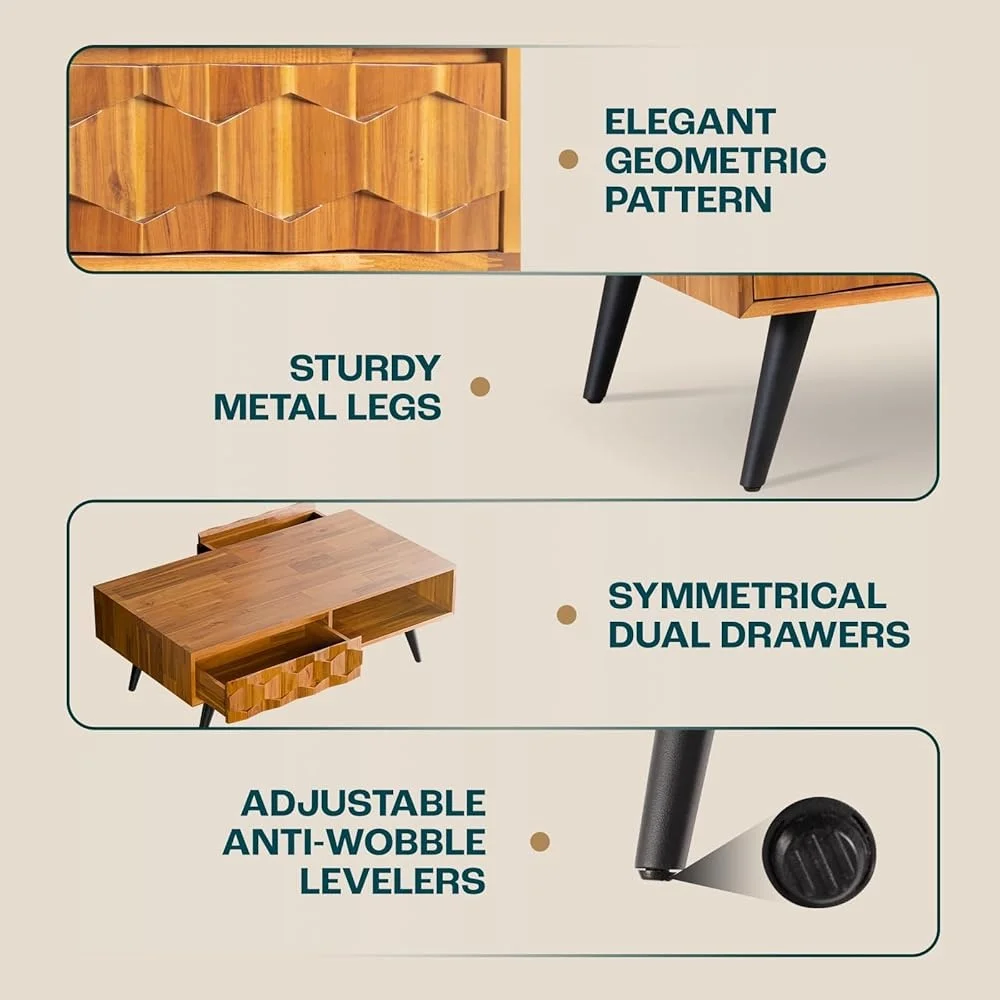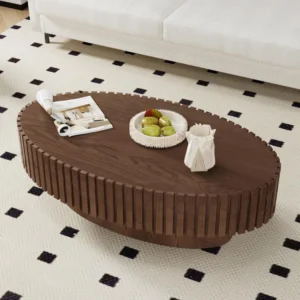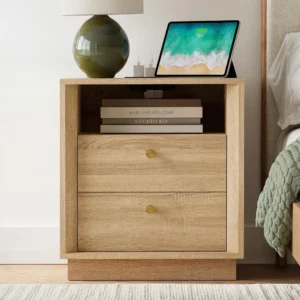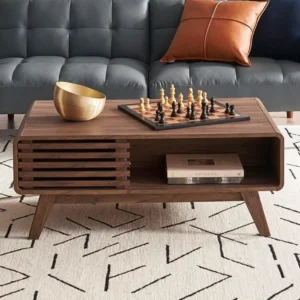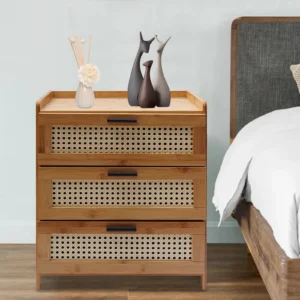The Distinctive Nature of Teak Wood
Teak wood (Tectona grandis) stands as one of the world’s most prized hardwoods, renowned globally for its remarkable combination of beauty, durability, and natural water resistance. This exceptional timber has earned its reputation through centuries of use in everything from temple construction to luxury yacht decking. While all genuine teak shares certain core qualities, what many admirers don’t realize is how significantly its visual and structural characteristics can vary depending on where it was grown.
These regional differences aren’t merely superficial—they represent meaningful variations that can influence everything from appearance to performance. Understanding these distinctions becomes particularly important when selecting teak for specific applications, whether crafting fine furniture, building outdoor structures, or creating decorative elements.
The variations we see in teak aren’t random or arbitrary. Rather, they result from specific environmental conditions, growth factors, and silvicultural practices unique to each growing region. Many intelligent black mid-century coffee tables showcase these distinctive grain patterns that reflect their geographical origins.
In this exploration, we’ll journey through the world’s major teak-producing regions to understand how location shapes this remarkable material’s character. From the legendary forests of Myanmar to modern plantations across the tropics, each source produces teak with its own distinctive signature in grain, color, and properties.
As we explore these differences, you’ll gain deeper appreciation for why teak remains so highly valued, particularly when used in premium applications like mid-century modern teak coffee tables and other fine furnishings.
Understanding Wood Grain: The Basics
Before diving into regional variations, it’s helpful to understand what exactly constitutes wood grain and how it forms. Wood grain refers to the orientation, appearance, and texture of wood fibers as they grow within a tree. In teak, this includes several key components:
- Wood fibers – The elongated cells that provide structural support
- Vessels/pores – Tube-like structures that transport water through the tree
- Growth rings – The layers of wood formed during different growing seasons
- Medullary rays – Horizontal cells that store and transport nutrients
Teak typically exhibits straight grain patterns, though variations can include wavy, interlocked, or occasionally figured patterns depending on growing conditions and genetic factors. How the lumber is cut also dramatically affects the visible grain pattern:
- Quarter-sawn teak displays straight, parallel lines with distinctive flecking
- Flat-sawn (plain-sawn) teak shows broader, more dramatic grain patterns
- Rift-sawn teak provides a compromise with straight, consistent grain but less flecking
These grain characteristics affect not just appearance but also important physical properties like stability, strength, and how the wood responds to finishing. Understanding these basics helps explain why the definitive guide to teak grain emphasizes the importance of grain patterns in furniture quality and longevity.
The terminology and concepts introduced here will help us better appreciate the regional differences we’ll explore in subsequent sections, as we examine how environmental conditions shape these fundamental wood characteristics.
Environmental Factors Influencing Teak Grain Formation
The distinctive grain patterns found in teak from different regions aren’t simply a matter of genetic variation—they result directly from environmental conditions that influence how trees grow. Several key factors play crucial roles in determining teak’s final characteristics:
Climate and Seasonal Patterns
Teak thrives in tropical monsoon climates with distinct wet and dry seasons. This cyclical pattern creates visible growth rings, with faster growth during rainy periods and slower, denser growth during dry seasons. Regions with more pronounced dry seasons typically produce teak with tighter, more defined grain patterns. The severity and predictability of these seasonal changes directly influence grain formation.
Soil Composition
The mineral content, acidity, and drainage properties of soil significantly impact teak’s development. Calcium-rich soils tend to produce teak with richer color, while soil texture affects density and grain structure. Regions with ideal soil compositions—well-drained, moderately fertile soils with good calcium content—generally produce teak with superior qualities.
Natural Forests vs. Plantations
Teak grown in natural forest settings typically develops more slowly due to competition for resources, resulting in denser wood with tighter grain patterns. Plantation-grown teak often grows more quickly, which can lead to wider grain lines and sometimes less density, though well-managed plantations can produce excellent quality timber through proper spacing and silvicultural techniques.
Tree Age and Growth Rate
Perhaps the most significant factor in grain development is simply time. Older teak trees develop more heartwood, higher oil content, and generally more desirable properties. Traditional harvesting in natural forests might allow trees to grow for 60-80 years or more, while plantation rotations may be as short as 20-30 years. This fundamental difference in maturity creates significant variation in grain tightness and wood characteristics.
Silvicultural Practices
Human intervention through pruning, thinning, and other management techniques also influences grain development. Proper thinning allows remaining trees to develop fuller canopies and thicker trunks, potentially improving grain quality and consistency.
Understanding these environmental influences helps explain why teak from different regions develops such distinctive characteristics—variations that go far beyond simple differences in appearance to affect fundamental properties like durability, workability, and performance.
Burmese Teak: The Historical Gold Standard
When connoisseurs discuss premium teak, Burmese (Myanmar) teak invariably enters the conversation as the benchmark against which all other varieties are measured. This legendary timber earned its reputation through centuries of exceptional performance and distinctive characteristics.
Burmese teak features a distinctive grain pattern that sets it apart from other regional varieties:
- Fine, even grain with subtle, natural variation
- Slightly wavy patterns that create visual interest without irregularity
- Tight growth rings indicating slow, steady development
- Occasional “figure” that creates appealing visual patterns
The color profile ranges from a rich golden-brown when freshly cut to a deeper, more mature brown as it ages and oxidizes. This warm, consistent coloration has made it particularly desirable for fine furniture and architectural applications where appearance matters.
What truly distinguishes Myanmar teak is its exceptional density and remarkably high natural oil content. These oils—primarily tectoquinones—provide natural resistance to water, rot, insects, and even acids. The combination of tight grain structure and abundant oils creates a material with unmatched durability and stability, explaining its historical preference for demanding marine applications.
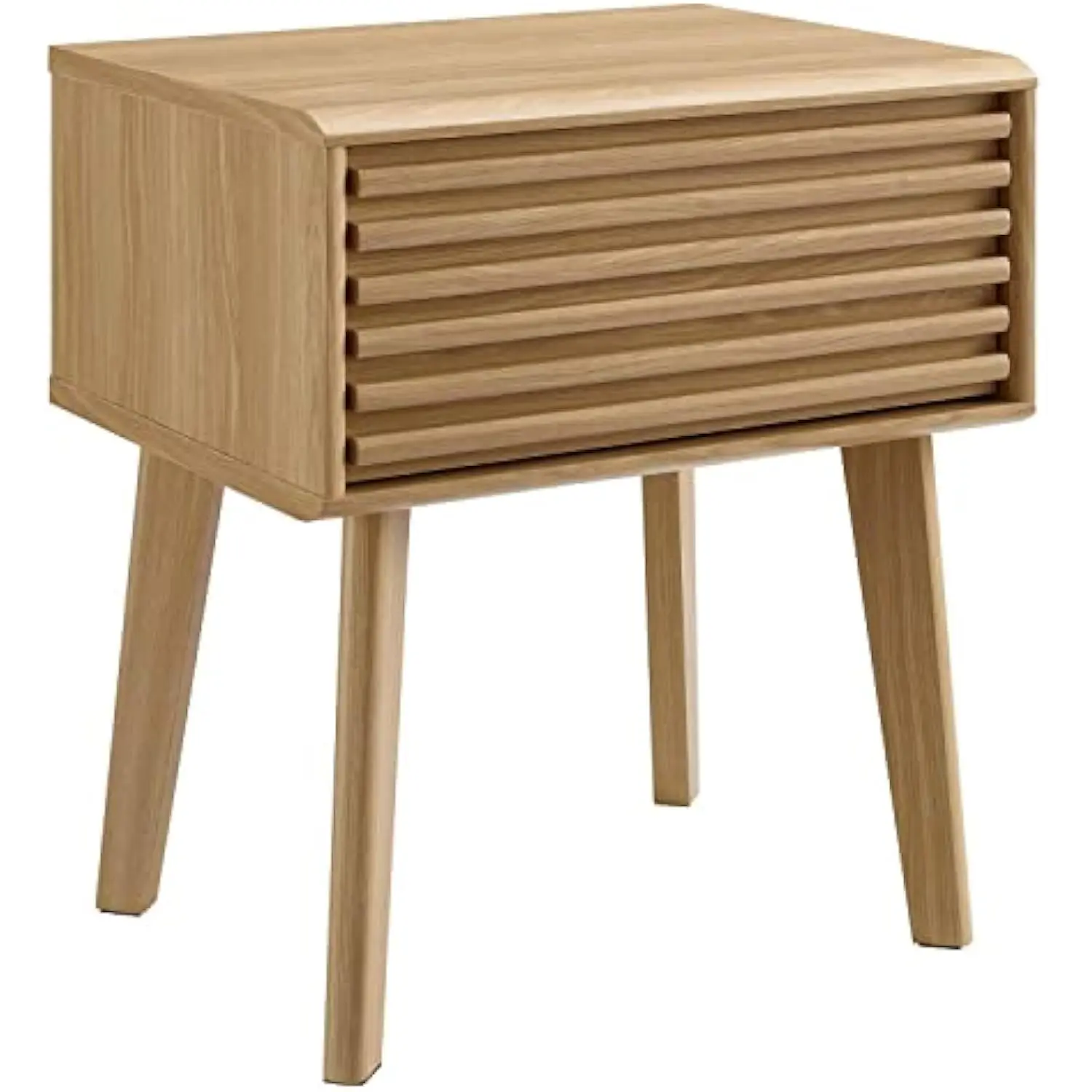
Historically harvested from old-growth forests where trees might develop for a century or more before harvest, Burmese teak represents the pinnacle of the species’ potential. The proper definitive guide to teak grain direction often highlights how these slow-growing conditions create wood with exceptional structural integrity and working properties.
While still available, genuine old-growth Burmese teak has become increasingly scarce due to harvesting restrictions and conservation efforts. This scarcity has elevated both its price and status, making it primarily a material for luxury applications where its unmatched properties justify the premium cost.
Indonesian Teak: Plantation Excellence
Indonesia, particularly the island of Java, has emerged as a global leader in high-quality plantation teak production. Unlike the old-growth forests of Myanmar, Indonesian teak predominantly comes from carefully managed plantations, some established over 150 years ago during the Dutch colonial period.
Indonesian teak exhibits several distinctive characteristics:
- Consistently straight grain patterns with tight, uniform lines
- Minimal irregularities or interlocked grain
- Color ranging from pale yellow in younger trees to a warm golden brown in mature specimens
- Excellent dimensional stability and natural resistance to elements
What distinguishes Indonesian teak is the combination of favorable growing conditions with sophisticated plantation management. The government-managed Perum Perhutani estates implement scientific forestry practices that maximize quality while maintaining sustainability. These managed growing conditions produce teak with remarkably consistent characteristics—a significant advantage for commercial applications where predictability matters.
While generally not as dense or oil-rich as old-growth Burmese teak, premium Indonesian plantation teak still offers excellent durability and performance. The controlled growing environment allows for optimization that balances growth rate with wood quality, creating material suitable for demanding applications.
Many mid-century modern solid wood coffee tables showcase Indonesian teak’s straight, clean grain pattern, which perfectly complements the clean lines and organic forms of this design aesthetic. The reliable quality and more sustainable production methods have made it the preferred choice for many contemporary manufacturers focused on both quality and environmental responsibility.
Indonesian teak represents an important evolution in the teak market—demonstrating that with proper management, plantation-grown wood can achieve excellent quality while addressing concerns about natural forest depletion.
Indian Teak: Rich Character and Heritage
Indian teak offers a fascinating study in regional variation, with characteristics that reflect the subcontinent’s diverse growing conditions. Long before becoming a global commodity, teak was integral to Indian architecture and craftsmanship, with techniques refined over thousands of years.
Indian teak typically displays:
- Grain patterns ranging from straight to moderately wavy
- Texture varying from fine to somewhat coarse
- Rich brown coloration often featuring distinctive darker streaks
- Moderate to high natural oil content, though typically less than old-growth Burmese varieties
What makes Indian teak particularly interesting is the significant variation found even within the country. Regional types include:
- Malabar teak from the Western Ghats, known for exceptional quality and rich coloration
- Central Indian varieties featuring distinctive grain patterns and sometimes darker hues
- Northern varieties adapted to more seasonal climates, often with more pronounced growth rings
These variations reflect India’s diverse growing conditions, from tropical rainforests to more seasonal deciduous forests across different elevations and rainfall patterns.
The history of Indian teak in furniture making and architecture spans millennia, with techniques developed specifically to highlight its distinctive characteristics. Traditional Indian woodworking often emphasizes the rich color variations and interesting grain patterns found in local teak varieties.
While facing many of the same sustainability challenges as other regions, India maintains significant teak resources through both natural forests and expanding plantation efforts. This continuing availability has kept Indian teak as an important option in the global hardwood market, offering distinctive character at generally more accessible price points than Burmese varieties.
African Teak: Distinguishing True Teak from Alternatives
When discussing African teak, an important distinction must be made between two different materials: genuine plantation-grown Tectona grandis and the native African hardwood Iroko (Milicia excelsa), which is sometimes marketed as “African Teak” despite being an entirely different species.
True African Plantation Teak
Genuine teak plantations have been established in several African countries, including Ghana, Ivory Coast, and Tanzania. This true teak typically shows:
- Wider, more pronounced grain patterns due to faster growth rates
- Lighter yellowish-brown to medium brown coloration
- Generally straight grain with occasional irregularities
- Moderate natural oil content, though typically less than Asian varieties
The quality of African plantation teak varies significantly based on management practices, with the best examples offering good durability and working properties. The accelerated growth in African climates often produces wood with lower density than slow-grown Asian varieties, though properly managed plantations can yield excellent material for many applications.
Iroko: The “African Teak” Alternative
Iroko is a distinct species native to tropical Africa that shares some superficial similarities with genuine teak:
- Golden to medium brown color that darkens with age
- Natural resistance to decay and insects
- Good durability in outdoor applications
- Generally straight grain, though often with more interlocked patterns
Despite sometimes being marketed as “African Teak,” Iroko lacks true teak’s exceptional oil content and has different working properties. While a valuable hardwood in its own right, it represents a different material with distinct characteristics.
Understanding the unique teak grain patterns in furniture helps in distinguishing these different materials. Visual identification clues include examining the end grain structure, checking for teak’s characteristic oily feel, and noting the distinctive scent of genuine teak.
For consumers, the key takeaway is to verify exactly what species is being offered when encountering “African Teak” in the marketplace, as this terminology can refer to either plantation-grown Tectona grandis or the alternative species Iroko.
Other Regional Varieties: South American and Pacific Teak
As global demand for teak has grown, cultivation has expanded to regions far from its native Asian range. These newer growing regions produce teak with distinctive characteristics reflecting their unique environmental conditions.
South American Plantation Teak
Countries like Brazil, Costa Rica, Ecuador, and Panama have established significant teak plantations over the past few decades. South American teak typically features:
- Wider, less pronounced grain patterns reflecting faster growth rates
- Lighter coloration, often with yellowish or slightly reddish undertones
- Generally straight grain with minimal figuring
- Moderate density and oil content, though typically less than Asian varieties
The tropical climate of many South American growing regions allows for rapid growth, with rotation cycles often as short as 20-25 years. This accelerated development results in wood that’s generally less dense than slow-grown Asian varieties but still offers good durability for many applications. The best South American plantations implement careful management practices to optimize quality despite faster growth.
Pacific Region Teak
The Solomon Islands, Papua New Guinea, and other Pacific nations have also developed teak industries. These Pacific varieties often display:
- Medium-grain patterns with moderate definition
- Coloration ranging from golden yellow to medium brown
- Generally good stability and working properties
- Moderate natural oil content
The tropical maritime climate of these regions creates growing conditions somewhat similar to teak’s native range, though typically with less pronounced seasonal variation. This tends to produce wood with less distinct growth rings but good overall quality when properly managed.

Central American countries like Mexico, Guatemala, and Honduras have also developed teak industries with characteristics similar to their South American neighbors—focusing on managed plantations with relatively short rotation cycles designed to balance growth rate with wood quality.
These emerging sources of teak have significantly expanded global supply while offering more accessible price points than traditional Asian varieties. While generally not achieving the premium quality of slow-grown Burmese or the best Indonesian teak, these newer regional varieties provide good options for applications where ultimate performance is less critical than cost considerations.
Comparative Analysis: Regional Teak Characteristics
To clearly understand how teak varies across regions, this comparative analysis highlights the key differences in grain, color, density, and other important characteristics:
| Region | Predominant Grain Pattern | Color Range | Density | Oil Content | Distinguishing Features |
|---|---|---|---|---|---|
| Myanmar (Burma) | Fine, straight to slightly wavy | Rich golden-brown to dark brown | Very high | Exceptionally high | Tight growth rings; subtle figure; premium price |
| Indonesia (Java) | Straight, uniform | Pale yellow to golden brown | High | High | Consistent quality; well-managed plantations |
| India | Straight to moderately wavy | Rich brown with darker streaks | Medium-high | Medium-high | Regional variations; rich color contrasts |
| Africa (True Teak) | Wider, straight | Yellowish-brown to medium brown | Medium | Medium | Variable quality based on plantation management |
| South America | Wide, less pronounced | Light brown, sometimes with yellowish or reddish tint | Medium | Medium-low | Fast growth; more affordable; good consistency |
| Pacific Region | Medium, moderately defined | Golden yellow to medium brown | Medium | Medium | Good stability; maritime growing conditions |
This variation in characteristics directly affects both price and optimal applications. The highest quality Burmese teak, with its exceptional density and oil content, remains the premier choice for demanding applications like luxury marine decking where exposure to harsh elements requires maximum durability. Indonesian plantation teak offers excellent quality for fine furniture and architectural applications at somewhat more accessible price points.
The grain patterns characteristic of different regions also influence aesthetic considerations. The fine, even grain of premium Asian teak complements designs requiring refinement and precision, like many black mid-century coffee table designs where clean lines and subtle detail are essential.
South American and African plantation teaks, with their more affordable price points, provide good options for general outdoor furniture, interior trim, and applications where teak’s natural durability is desired without requiring the ultimate premium quality.
Understanding these regional differences allows for informed selection based on the specific requirements of each project, balancing quality needs with budget considerations.
Identifying Authentic Teak and Its Origin
With teak’s premium price and global demand, the ability to identify authentic teak and potentially determine its origin becomes an important skill. Several key characteristics help distinguish genuine teak from imitators:
Visual Identification
- Look for a straight grain pattern with a smooth, uniform texture
- Genuine teak exhibits a distinctive golden-brown color that darkens with age
- Examine the end grain for the characteristic porous structure with visible growth rings
- True teak often displays small white calcium deposits in the wood pores
Tactile and Sensory Clues
- Authentic teak feels slightly oily or waxy to the touch due to natural oils
- When freshly cut or sanded, teak produces a distinctive leather-like scent
- The wood has a medium weight—neither extremely heavy nor lightweight
- Quality teak feels smooth even when unfinished
Simple Tests
- Place a drop of water on unfinished wood—teak repels water due to natural oils
- Examine how it weathers—genuine teak silvers gracefully without splitting
- Check density by comparing weight to volume—premium teak has higher density
Determining regional origin can be more challenging but possible by examining:
* Grain tightness (Burmese typically has tightest grain patterns)
* Color variations (Indian teak often has darker streaks)
* Growth ring patterns (reflecting regional seasonal variations)
Learning how to identify real wood coffee tables includes understanding these characteristics that distinguish genuine teak from alternatives like “Rhodesian teak” (actually Guibourtia coleosperma) or “Brazilian teak” (Cumaru).
Purchasing from reputable suppliers with transparent sourcing information provides the best assurance of authenticity and origin. When significant investments are involved, documentation like certificates of origin can provide additional verification, particularly for protected varieties like old-growth Burmese teak.
Practical Implications: How Grain Variation Affects Use
The regional variations in teak grain directly impact both aesthetic choices and performance considerations across different applications. Understanding these implications helps in selecting the appropriate teak variety for specific projects.
Aesthetic Considerations
Different grain patterns suit various design styles:
- Fine, straight grain teak (typically from Burma or Indonesia) complements clean, modern designs where consistent lines enhance minimalist aesthetics
- More distinctive grain patterns with natural variation work beautifully in organic designs that celebrate natural materials
- Wider grain patterns common in plantation teak can enhance rustic or casual designs where more visible texture is desirable
The color variations between regions also influence design compatibility. The rich golden-brown of premium Asian teak creates a warm, sophisticated appearance, while the sometimes lighter tones of plantation teak might better complement contemporary color schemes.
Workability Differences
Regional variations significantly affect how teak processes during fabrication:
- Dense, oily Burmese teak requires sharp tools and careful technique but produces exceptional finish quality
- Less oily plantation varieties may be easier to machine but might require more attention during finishing
- Grain direction and stability affect joinery performance—straight-grained varieties typically offer better joint integrity
The natural oils in teak can also affect adhesive performance and finishing techniques. The best table finishes for teak grain often account for these regional differences, with some finishes better suited to highlighting the distinctive characteristics of specific varieties.
Performance Considerations
Application requirements should guide regional selection:
- Marine environments demand the highest oil content and density—premium Burmese or top-grade Indonesian teak remains ideal
- Outdoor furniture exposed to weather benefits from the stability and natural resistance of quality Asian varieties
- Interior furniture may perform perfectly well with plantation teak from various regions, where environmental demands are less extreme
The careful matching of regional characteristics to application requirements ensures both aesthetic satisfaction and appropriate performance, maximizing the value of this premium material regardless of origin.
How Environment Shapes Teak: Science Behind the Grain
The visible differences in teak from various regions reflect fascinating biological processes that directly connect environmental conditions to wood structure. Understanding this science helps explain why location matters so profoundly in determining teak’s characteristics.
Growth rings in teak form as direct responses to seasonal changes. In regions with pronounced wet and dry seasons, like Myanmar and parts of India, trees produce distinct bands of different cell structures. During rainy seasons, teak grows rapidly, creating larger cells with thinner walls. In dry seasons, growth slows dramatically, forming smaller, thicker-walled cells that appear as darker bands. These alternating patterns create the tight, well-defined grain prized in premium teak.
Soil chemistry influences both color development and cellular structure. Higher calcium content contributes to teak’s golden hue and affects how extractives (natural oils and compounds) develop within the wood. Mineral availability impacts density at the cellular level—trees growing in optimal soil develop more robust cell structures.
The fundamental relationship between growth rate and wood density explains why slow-grown teak from natural forests typically outperforms faster-grown plantation varieties. Slower growth allows for more complete lignification (the process of cell wall hardening) and greater development of extractives that provide natural resistance to decay and insects.
Modern teak wood grain in rustic and modern designs showcases how these scientific principles translate into visible and tangible differences. The cellular structure determined by growth conditions directly affects how light interacts with the wood surface, creating the distinctive appearance and tactile qualities that define different regional varieties.
Understanding these connections between environment and wood structure not only explains existing variations but also informs efforts to improve plantation management techniques—attempting to recreate optimal conditions that produce higher quality wood despite faster growth cycles.
Selecting the Right Teak for Your Needs
Choosing the ideal teak for your specific project requires balancing several key considerations to ensure both satisfaction and value. Different applications demand different qualities, making regional origin an important factor in selection.
For marine applications and outdoor structures exposed to harsh conditions, the exceptional durability of premium Burmese or top-grade Indonesian teak often justifies its higher cost. The superior natural oil content and density provide longevity that can actually represent better value over time despite higher initial investment.
For indoor furniture where environmental exposure is less severe, well-managed plantation teak from regions like Indonesia, South America, or Africa can provide excellent performance at more moderate price points. Consider how the specific grain characteristics complement your design aesthetic—whether you prefer the refined elegance of fine-grained Asian varieties or the more casual character of wider-grained plantation teak.
Budget considerations naturally influence choices, but remember that different grades exist within each regional category. A high-grade Indonesian plantation teak might outperform lower-grade Burmese teak despite regional generalizations. Working with knowledgeable suppliers who understand these quality variations can help optimize value for your specific application.
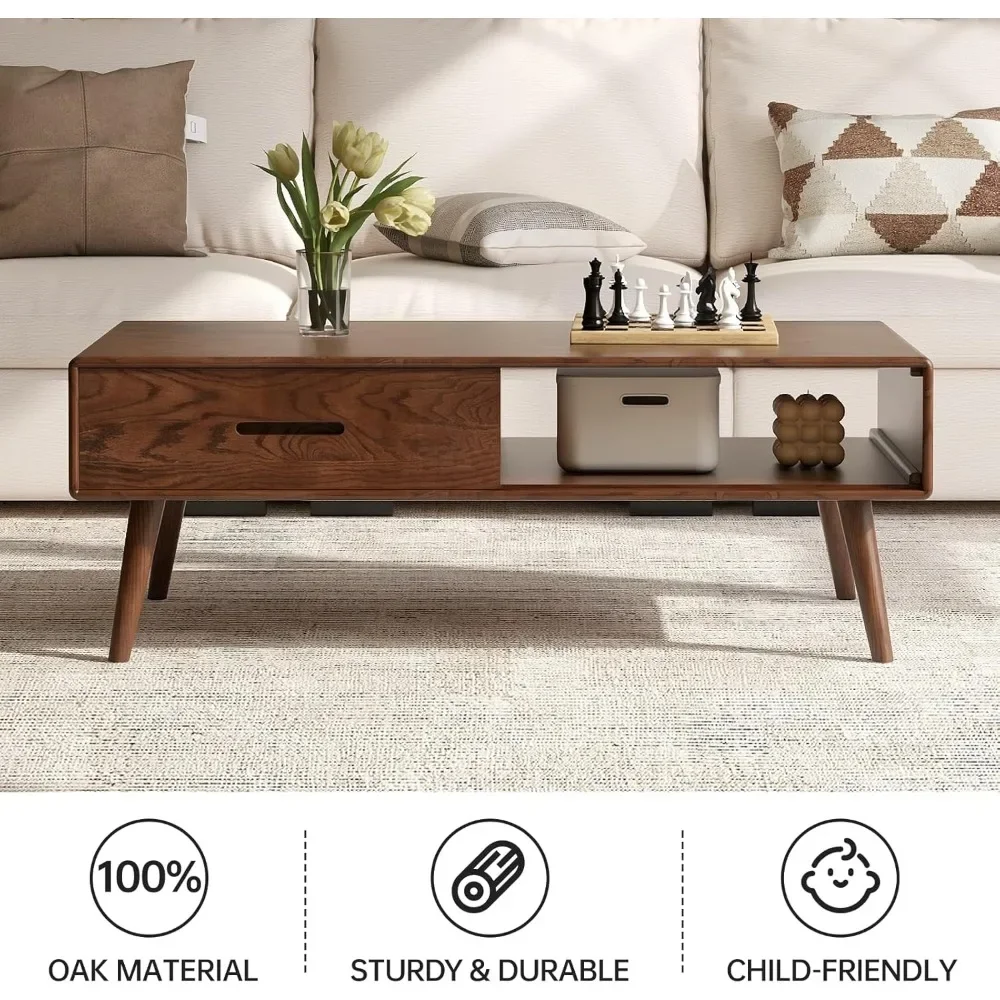
Many distinctive features of black mid-century coffee tables incorporate teak components selected specifically for grain characteristics that complement their design language. This thoughtful matching of material to application represents the ideal approach to teak selection.
Mid-Century Modern Solid Wood Coffee Tables, Mid-Century Modern Teak Coffee Tables
$879.95 Select options This product has multiple variants. The options may be chosen on the product pageMid-Century Modern Danish Coffee Tables, Mid-Century Modern Oval Coffee Tables, Mid-Century Modern Solid Wood Coffee Tables
$390.05 Select options This product has multiple variants. The options may be chosen on the product pageMid-Century Modern Oval Coffee Tables, Mid-Century Modern Solid Wood Coffee Tables
$679.56 Select options This product has multiple variants. The options may be chosen on the product pageMid-Century Modern Solid Wood Side & End Tables, Mid-Century Modern Vintage Side & End Tables
Price range: $347.99 through $376.99 Select options This product has multiple variants. The options may be chosen on the product pageMid-Century Modern Solid Wood Coffee Tables, Mid-Century Modern Walnut Coffee Tables
$501.53 Select options This product has multiple variants. The options may be chosen on the product pageMid-Century Modern Small Side & End Tables, Mid-Century Modern Solid Wood Side & End Tables
$221.85 Select options This product has multiple variants. The options may be chosen on the product page
Sustainability considerations also merit attention when selecting teak. Responsibly harvested plantation teak, while perhaps not matching the ultimate quality of old-growth varieties, often represents a more environmentally sound choice that still provides excellent performance for most applications.
Teak Sustainability and Ethical Sourcing
As appreciation for teak’s exceptional qualities has grown globally, so too has awareness of sustainability challenges facing this precious resource. Making informed choices about teak sourcing represents an important aspect of responsible consumption.
Teak faces several sustainability challenges:
- Old-growth forests have diminished significantly in traditional growing regions
- The long growth cycle (60-80+ years for premium quality) creates supply pressures
- High market value incentivizes illegal harvesting in protected areas
- Growing demand continually increases pressure on remaining resources
Certification systems like the Forest Stewardship Council (FSC) provide valuable guidance for ethical sourcing. These certifications verify that teak comes from responsibly managed forests maintained according to strict environmental and social standards. While not perfect, these systems offer the best available assurance of sustainable harvesting practices.
Plantation-grown teak, despite sometimes not matching the quality of old-growth varieties, represents an important sustainability solution. Well-managed plantations can produce quality timber while reducing pressure on natural forests. When selecting plantation teak, look for operations with long-term management plans that balance growth rate with quality development.
Reclaimed teak offers another environmentally conscious option. Salvaged from old structures, boats, or industrial applications, reclaimed teak provides the quality of older-growth wood without requiring new harvesting. The character and patina of reclaimed material can add unique appeal to contemporary designs while representing responsible resource use.
For projects where teak’s specific properties aren’t absolutely essential, considering alternative hardwoods like mid-century modern walnut coffee tables provides another way to reduce demand pressure on teak resources while still achieving beautiful results.
FAQs: Common Questions About Regional Teak Variations
Which teak typically has the straightest grain?
Indonesian plantation teak, particularly from well-managed Javanese plantations, generally features the most consistently straight grain patterns. The controlled growing conditions and selective breeding programs have optimized for this characteristic, making Indonesian teak excellent for applications requiring predictable, uniform grain orientation.
Is plantation teak as good as old-growth forest teak?
Premium plantation teak can approach the quality of old-growth teak, but typically doesn’t match it entirely. The fundamental difference lies in growth rate—old-growth trees develop more slowly, creating denser wood with higher oil content. However, well-managed plantations with longer growth cycles (40+ years) can produce excellent quality timber suitable for most applications. The best plantation teak from Indonesia approaches traditional quality standards while offering better sustainability credentials.
How can I be sure I’m buying real teak and not an imitation?
Look for teak’s distinctive characteristics: a smooth, slightly oily feel; golden-brown color; straight grain pattern; and characteristic leather-like scent when freshly cut. Purchasing from reputable suppliers who can verify their sourcing provides additional assurance. For significant investments, request documentation of origin. Examining samples of mid-century modern solid wood side end tables can help familiarize yourself with authentic teak’s appearance and feel.
What is generally the most expensive type of teak?
Old-growth Burmese (Myanmar) teak remains the most expensive, particularly large pieces with straight grain and minimal defects. Its combination of exceptional density, high oil content, straight grain, and historical reputation maintains its position as the premium standard. Limited supply due to harvesting restrictions has further increased its market value, making it primarily a material for luxury applications.
Does teak wood color change over time?
Yes, all teak naturally changes color with exposure to air and light. Fresh teak typically has a golden-brown color that, if left unfinished and exposed to elements, will gradually weather to a silvery-gray patina. Indoor teak protected from UV exposure typically darkens to a deeper, richer brown over time. Regular application of appropriate oils can maintain teak’s original color if preferred, though many appreciate the natural aging process as part of teak’s character.

